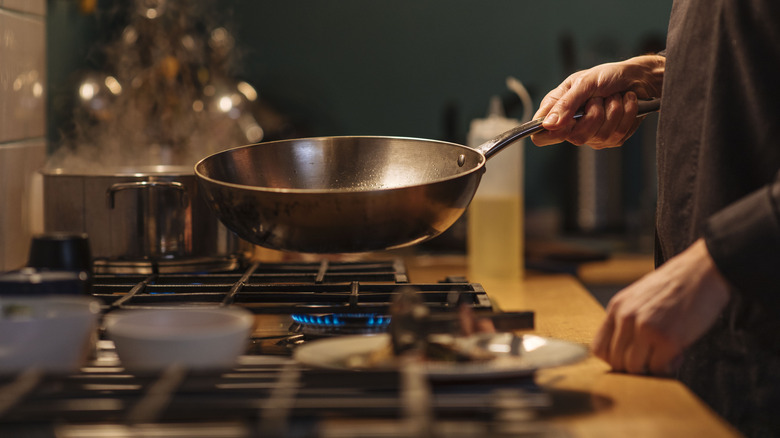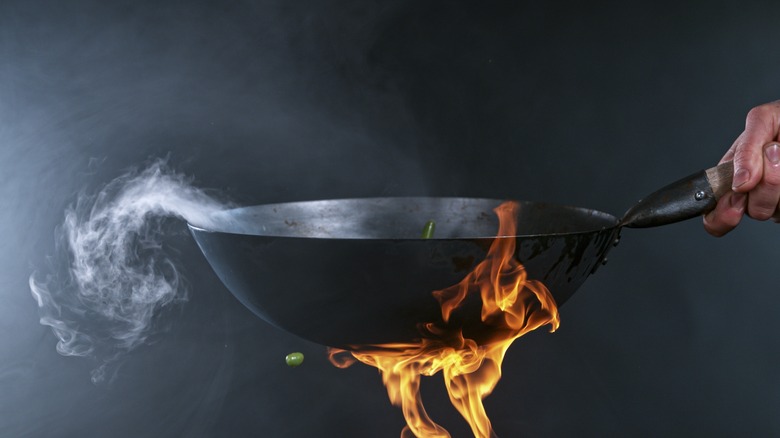How To Season A Wok And Keep It That Way
If you're the proud owner of a wok, there's a good chance it's made of either carbon steel or cast iron. These are some of the most common metals used to make many basic woks, and in either case, each material needs to be seasoned before you start using your pan to help prevent any rust from forming.
A wok is a great type of pan to have in your kitchen because there's so much you can do with it. With its flat bottom and deep well, it's designed to cook food at high heat and allow for easy tossing and flipping. That makes it the perfect tool for things like stir-frying and braising, but a wok is also great for things like steaming, deep-frying, and even indoor smoking.
There are several different ways you can go about seasoning a wok. The most common ingredient used to season a cast iron or carbon steel pan is fat like oil, lard, or shortening, but you can also use salt. And as far as the heating method, you can season your pan on the stovetop or in the oven. Whichever seasoning process you choose, each method will get the job done well as long as the proper steps are taken.
How to season your wok on the stove or in the oven
The first step to seasoning your wok will always be to wash it first with soap and water to get rid of any factory oils and expose the metal so it's primed for seasoning. If you're using the stovetop, heat the pan over high heat until it begins to smoke and darken in color, burning off any impurities (if your wok has handles, be sure to cover them in aluminum foil so they don't burn). Once your pan has been heated high enough and then cooled, rub a high-smoke-point oil all over the inside and outside of the wok with a paper towel and heat again until smoking, flipping and tilting your pan around to form an oil coating over the entire wok.
If you season your wok in the oven, the process is similar — but you can skip the initial heating. Simply place your pan on a foil-lined sheet pan, coat it with oil, and bake for 20 minutes at 450 degrees Fahrenheit. After seasoning with either method, rinse your wok with warm water and heat it on the stove again to make sure it's completely dried.
From there, maintaining a seasoned wok is easy: Simply continue to cook with it. The coating on your pan will only become more seasoned and effective the more you use it, and you can always repeat the process to refresh your wok's seasoned coating if needed.
Why should you season a wok, anyway?
When you season a wok, whether you do so on the stovetop or in the oven, you're essentially developing a protective layer over the entire pan called a patina. There are three main purposes for a patina and three reasons why you want your wok to have one.
First, the patina forms a coating that prevents rust from forming and protects the metal, keeping it safe from corrosion. Second, thanks to the oil, the patina creates a natural non-stick surface over your pan, so you don't end up having to clean a wok with food stuck on it. Ultimately, it's better protected and easier to cook with.
The third reason is that in the process of protecting your pan, seasoning helps add flavor to the food that you cook inside of it — building up seasoning and flavors from ingredients, salt, and spices over time and infusing those flavors into your food. It's a win-win-win, which is why you shouldn't skip out on seasoning that wok.



